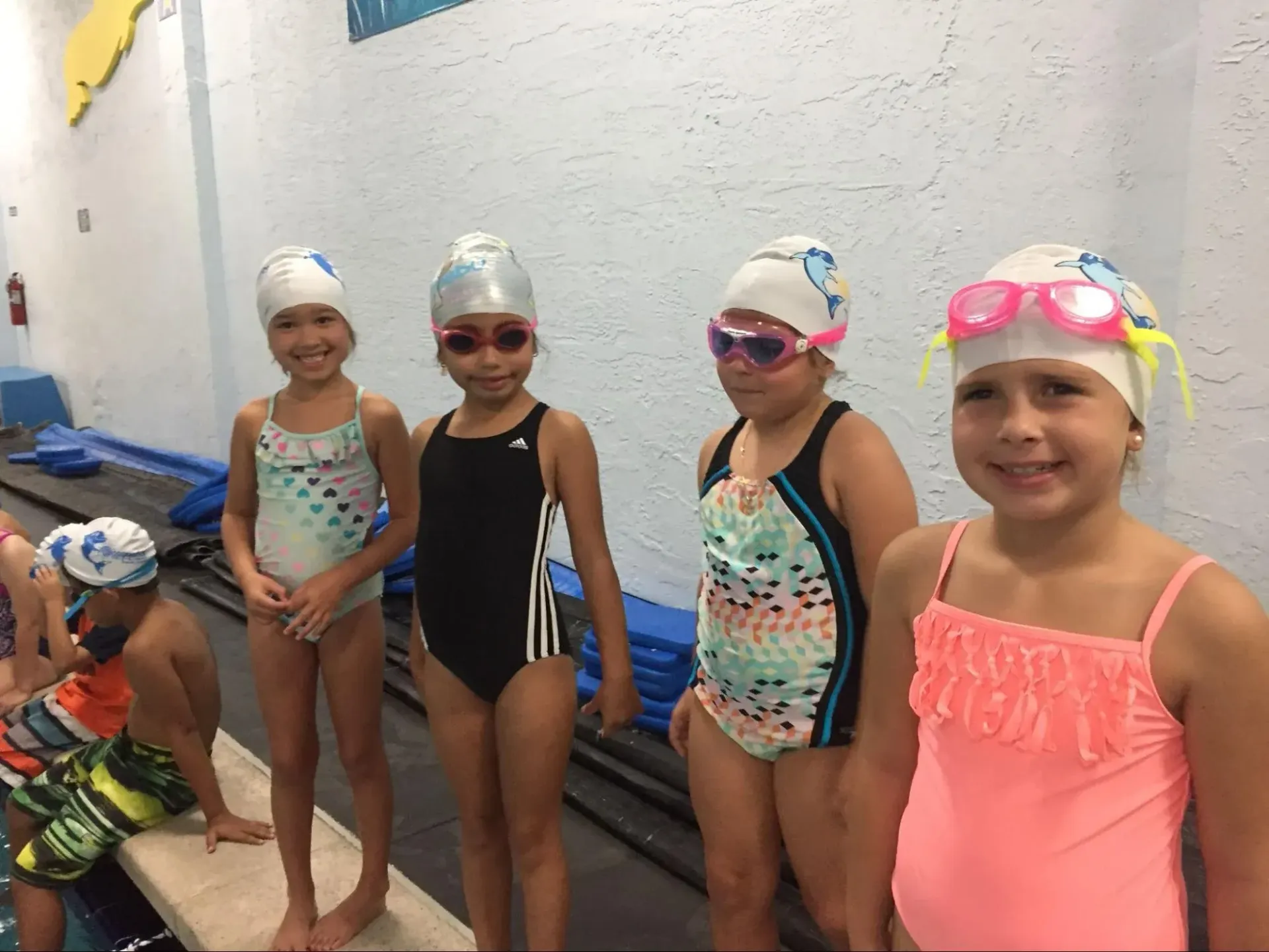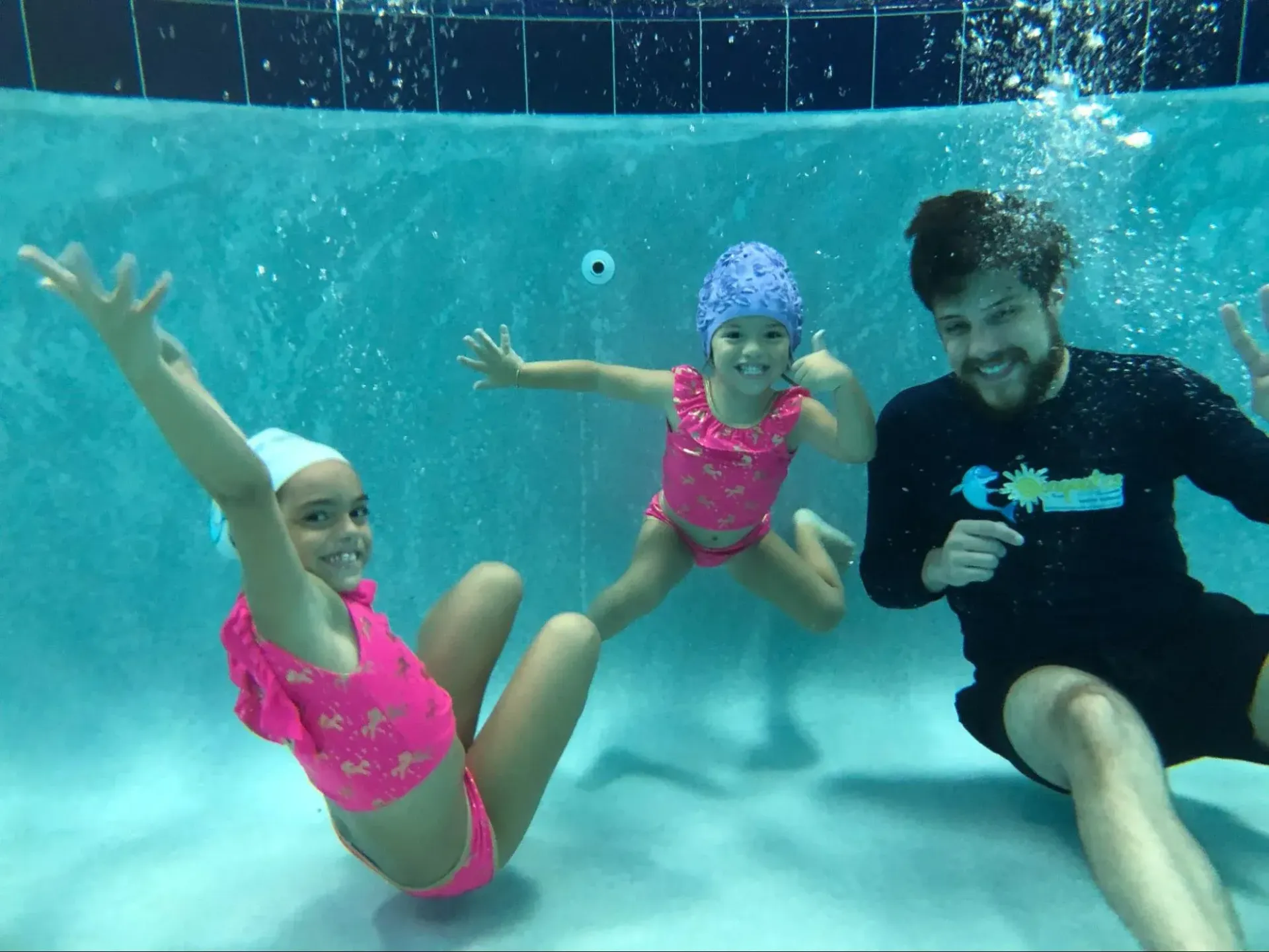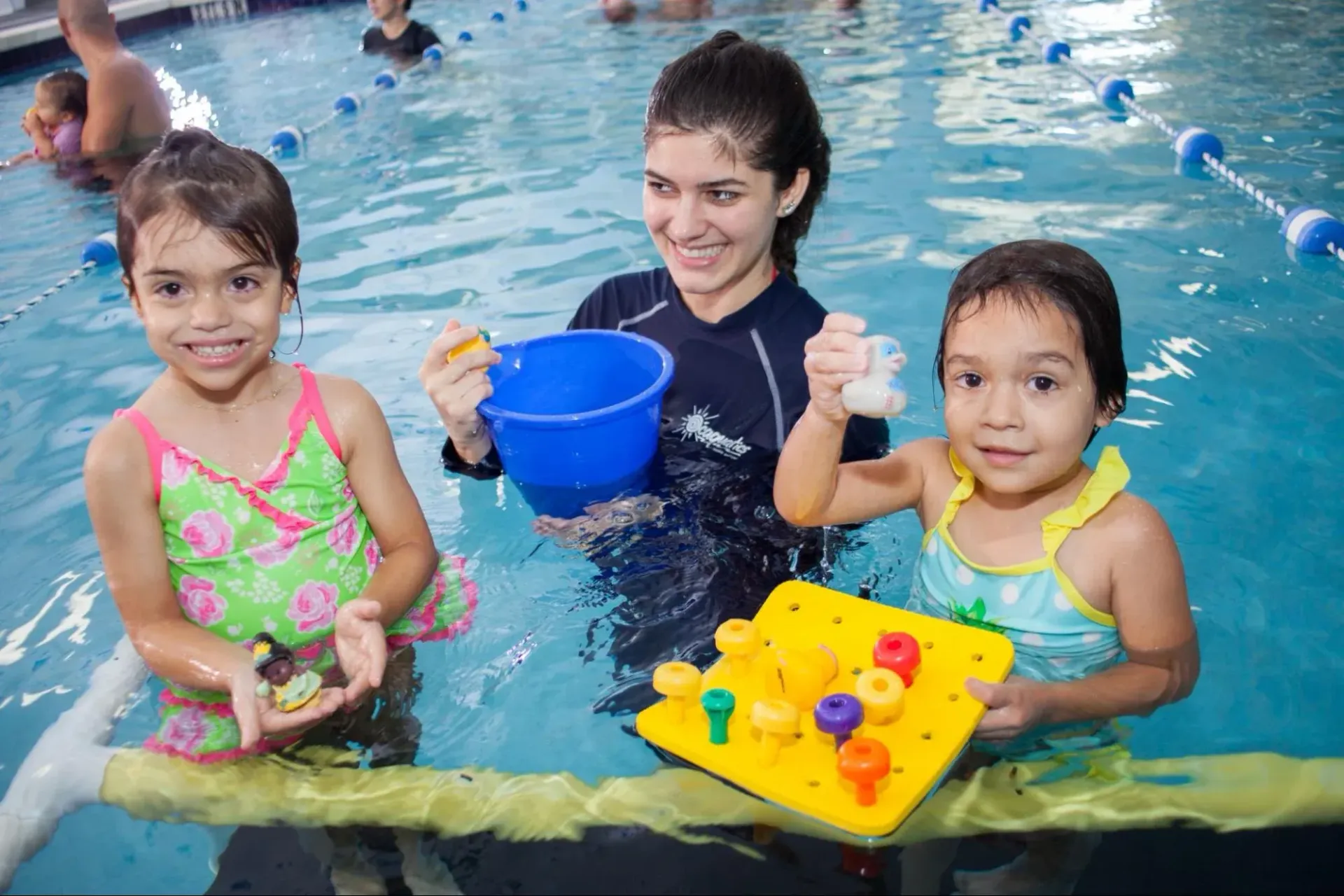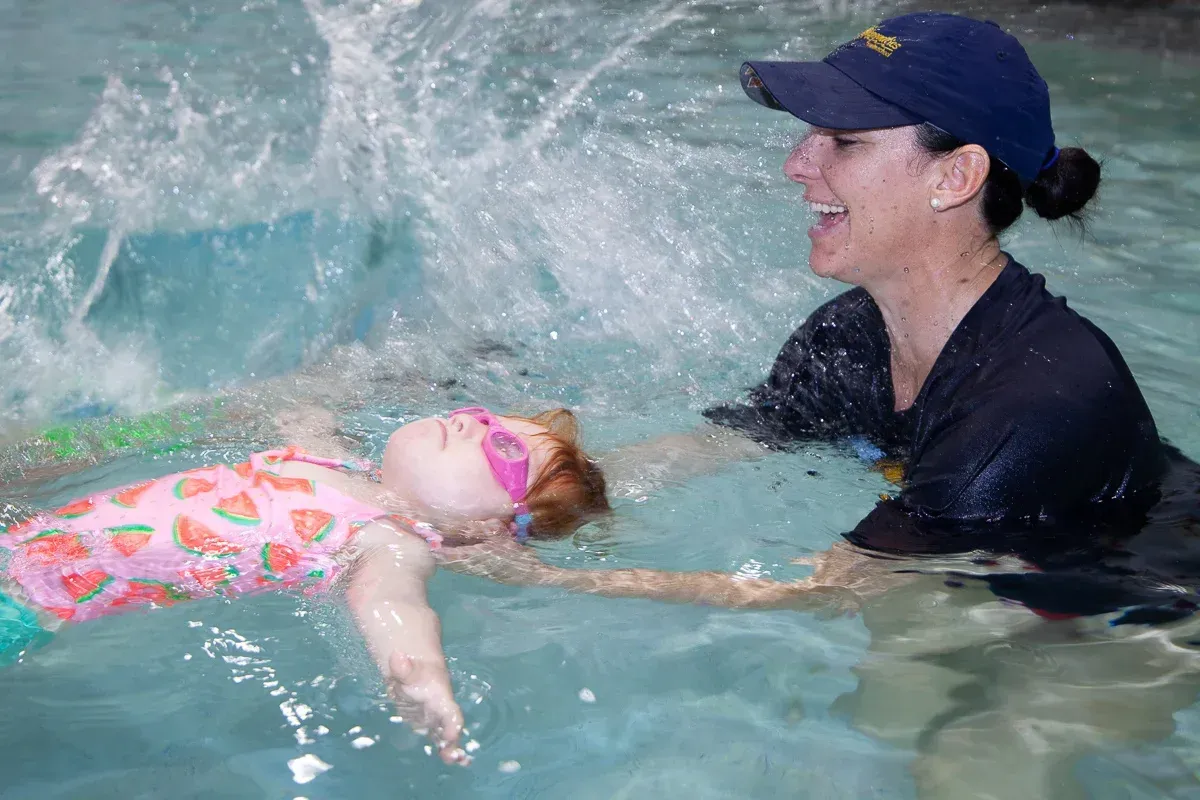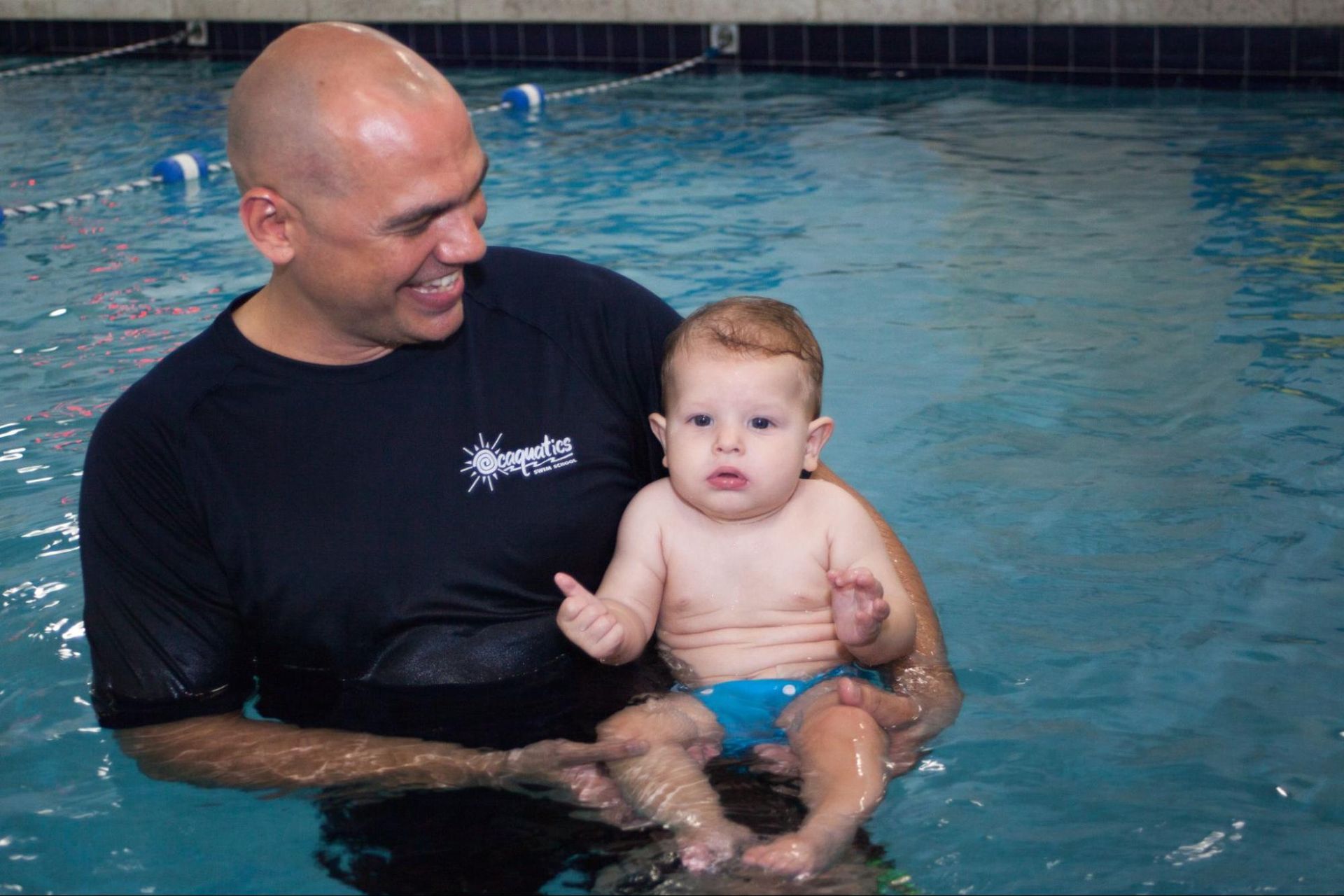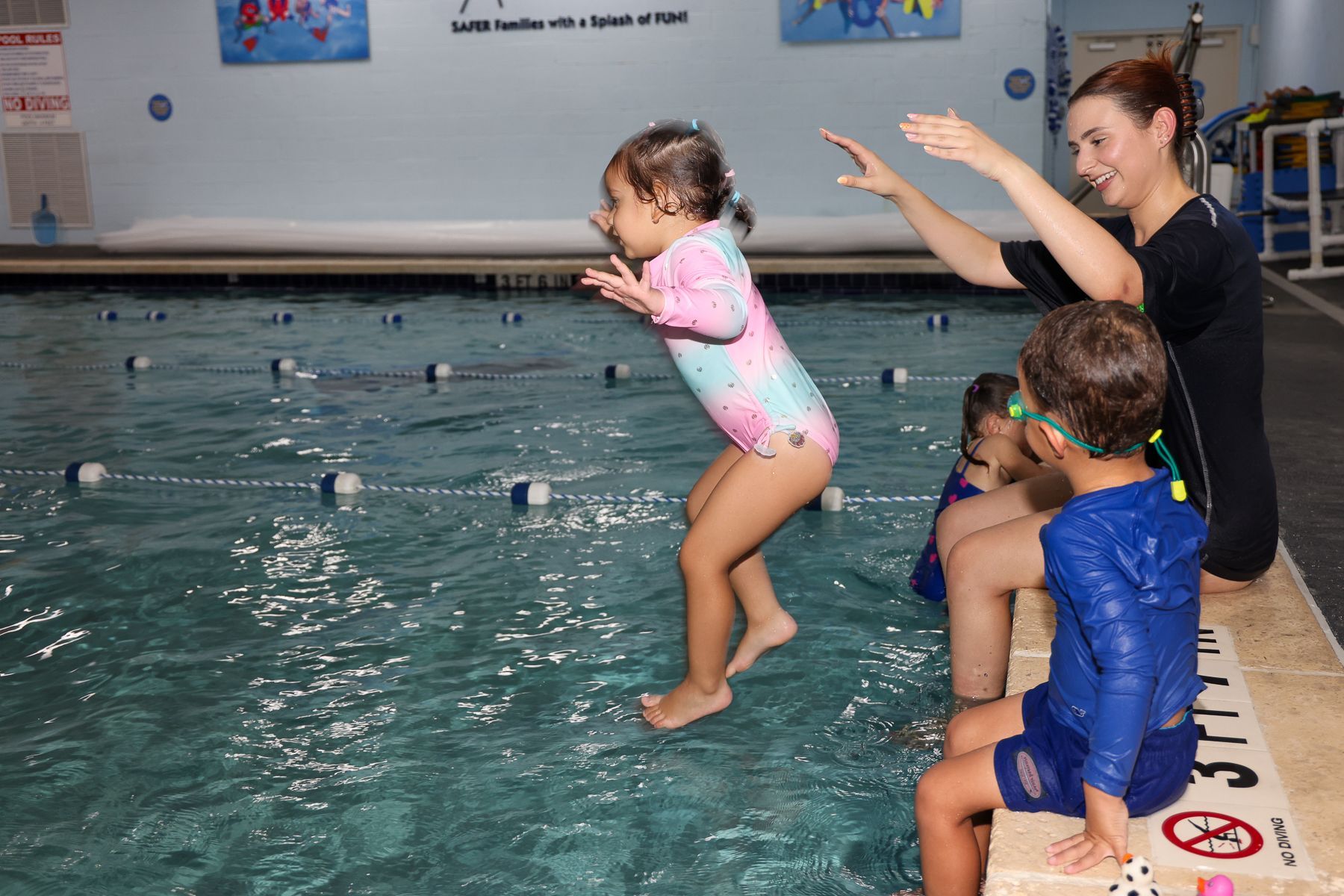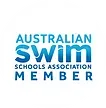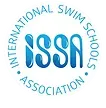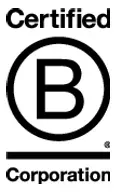Choosing the Right Swimming Goggles for Your Child: A Parent's Complete Guide
Your seven-year-old comes out of swim class with red marks around their eyes, complaining that the goggles hurt. Or maybe your toddler keeps pulling their goggles off mid-lesson because they're fogging up constantly. Sound familiar?
Finding the right child swimming goggles shouldn't feel like solving a puzzle, but many parents in South Florida struggle with this exact challenge. Between our year-round swimming season and the intense UV rays here in Miami, getting the right goggles isn't just about comfort but also about protecting your child's eyes and helping them actually enjoy their time in the water.
The problem is that the swimming gear aisle can feel overwhelming. Dozens of options, different price points, and marketing claims that all sound the same. Meanwhile, your child is getting frustrated with uncomfortable goggles that leak or fog up, making swim lessons more stressful than fun.
This guide will walk you through exactly how to choose swimming goggles that your child will actually want to wear. You'll learn what features matter most, how to get the perfect fit, and which mistakes to avoid. By the end, you'll feel confident picking goggles that protect your child's eyes, stay comfortable during long pool sessions, and maybe even make them excited about swim time.
What Makes Good Child Swimming Goggles Different from Adult Ones
Kids' goggles need smaller lenses, adjustable nose bridges, and softer gaskets that won't leave marks on delicate skin. The straps should adjust easily but stay put during swimming.
Children's eyes are more sensitive to chlorine and UV rays than adults, making lens quality and protection features even more important.
How to Get the Perfect Fit Every Time
The fit test is simple but crucial. When your child tries on the goggles, have them hold the goggles against their face without putting the strap over their head. The goggles should create a gentle suction and stay in place for a few seconds without the strap.
If they fall off immediately, they're too big. If your child has to press hard to make them stick, they're too small. The sweet spot is when they create a light seal with minimal pressure.
Check the nose bridge next. Your child should be able to blink normally without their eyelashes touching the lenses. If the goggles pinch the bridge of their nose or feel too loose there, look for adjustable nose pieces or different sizes.
The strap should sit comfortably around the back of their head, not too high up toward their crown or too low on their neck. When properly adjusted, you should be able to slip one finger under the strap. Make it snug enough to stay put, but not so tight that it gives them a headache.
Don't forget to have your child move around while wearing them. They should be able to turn their head, look up and down, and even smile without the goggles shifting or pinching.
Anti-Fog and UV Protection: Features That Actually Matter
Fogged-up goggles frustrate kids during swim lessons. Anti-fog coating helps but wears off after 6-12 months. The key is teaching your child not to touch the inside of the lenses because oils from fingers destroy the coating fast.
UV protection is essential here in South Florida. Look for goggles with UV protection or tinted lenses. Even indoor pools need protection because water reflects harmful rays.
Leak-Proof Design: What Really Works
The biggest factor in preventing leaks is proper fit, not expensive technology. Double-sealed gaskets work better than single-seal designs, and silicone lasts longer than rubber alternatives.
Even "zero leak" goggles will leak if your child adjusts them underwater or they get bumped during play. Focus on finding goggles that seal reliably under normal conditions.
Different Types of Lenses for Different Swimmers
Clear lenses work best for indoor pools and provide natural color perception. Tinted lenses reduce glare for outdoor swimming, which is essential here, where the sun reflects intensely off the water.
Mirrored lenses look cool, but can make instructor communication harder. Prescription goggles are available but expensive. Check with your eye doctor first, since many vision problems don't affect swimming much.
Age-Specific Considerations for Different Swimmers
Toddlers (ages 2-4) need the softest gaskets possible since their skin is more sensitive. Look for goggles specifically labeled for toddlers, with easy-adjust straps that older siblings or parents can help with. Bright colors and fun characters can make wearing goggles feel like play rather than a chore.
Elementary school kids (ages 5-8) can handle slightly firmer gaskets and more advanced features. This is when anti-fog coating becomes really important since they're doing more actual swimming and underwater activities. They also start caring about how their gear looks, so involving them in the selection process helps ensure they'll actually wear the goggles.
Tweens and teens (ages 9+) often prefer goggles that look more "serious" or athletic. They can handle adult-sized goggles if they fit properly, and features like interchangeable nose bridges become more important as their faces change shape.
Competitive swimmers of any age need low-profile racing goggles, but these aren't comfortable for recreational swimming or lessons. If your child swims competitively, they might need different goggles for racing versus practice and fun swimming.
Common Mistakes Parents Make When Buying Goggles
The biggest mistake is buying goggles without trying them on first. Even within the same brand, different models fit differently.
Don't buy expensive goggles assuming they're automatically better. Some premium goggles are designed for competitive swimmers and aren't more comfortable for lessons. Also, avoid buying goggles "to grow into" because ill-fitting goggles leak and make kids hate wearing them.
Frequently Asked Questions About Child Swimming Goggles
At what age should my child start wearing swimming goggles?
Most kids can start wearing goggles around age 3-4, when they're comfortable putting their face in water. Some toddlers as young as 2 can wear specially designed toddler goggles, but don't force it if they resist.
How often should I replace my child's swimming goggles?
Replace goggles when the gaskets become hard or cracked, the anti-fog coating wears off completely, or they no longer fit properly. With regular use, most kids' goggles last 6-12 months.
My child's goggles keep fogging up. What can I do?
Make sure they're not touching the inside of the lenses. You can also try anti-fog sprays or simply rinse them with cool pool water before swimming. If fogging persists, the anti-fog coating may need refreshing or replacement.
Are expensive goggles worth it for kids?
Not necessarily. The best goggles are the ones that fit well and feel comfortable. Some mid-range options work better than premium models, especially for recreational swimming and lessons.
How tight should swimming goggles be on my child?
Tight enough to create a seal but not so tight that they leave deep marks or cause headaches. You should be able to slip one finger under the strap when properly adjusted.
Can my child wear goggles if they have sensitive skin?
Yes, look for goggles with hypoallergenic silicone gaskets and softer materials. Some brands make goggles specifically for sensitive skin. Always check the fit to avoid unnecessary pressure.
Making the Smart Choice for Your Young Swimmer
Ready to find the perfect goggles for your child? Visit us at any of our Ocaquatics locations, where our experienced instructors can help you and your child find goggles that fit perfectly and feel comfortable. We work with young swimmers every day and know which brands and styles work best for different ages and face shapes.
We also sell goggles and have a variety of styles, colors, and more. We will help you find the best fit, so your child's swimming success can start with the right gear.
Contact us today, and enroll your kid in our swimming programs where they'll learn proper water safety, build confidence, and develop a lifelong love of swimming with equipment that actually works for them.





